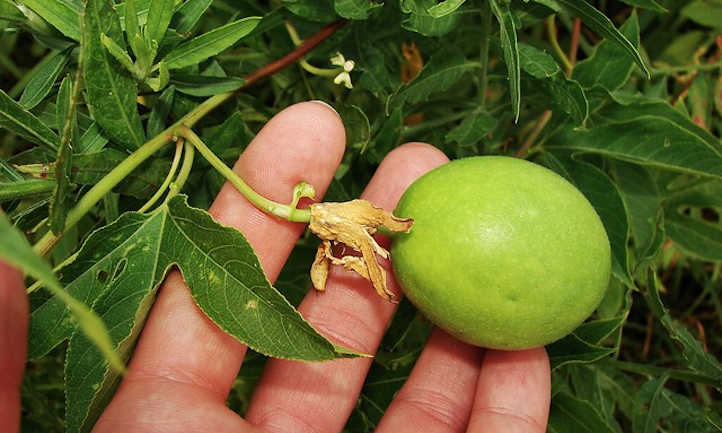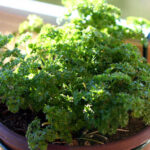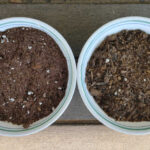Do you have a passion for tropical treats and funky flowers? If so, then passion fruit vine is the perfect choice for you! This is a fast-growing climber that will add intrigue to your garden and flavor to your dinner table.
Passionfruit vines are not for the faint of heart. These are vigorous plants that will climb to the treetops and explode in colorful blossoms and plentiful fruit. Even though they’re easy to grow, these plants need lots of water, nutrients, and pruning. But the harvest is well worth it!
You might think the name comes from gardener’s love for the fruit, but these plants actually have a religious history. In the 1700s, Spanish settlers thought the flower to be symbolic of Jesus Christ’s crucifixion. They named it based on the Latin meaning of Passio: suffering.
No actual suffering here though, because passion fruit is a delight to grow! With a little time and energy, this plant will quickly become the MVP of your garden and kitchen.
Get A Passion Fruit Vine
Quick Care Guide
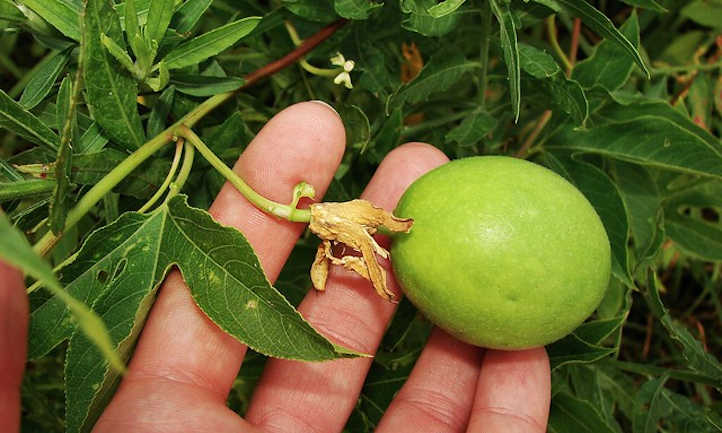
| Common Name(s) | Passionfruit, purple granadilla, purple passionfruit, water lemon, passionfruit vine |
| Scientific Name | Passiflora edulis |
| Days to Harvest | 80 days |
| Light | Full sun |
| Water: | Consistently |
| Soil | Well-draining, loamy, and fertile |
| Fertilizer | 2-4 times a year, high potassium |
| Pests | Caterpillars, root knot nematodes, snails |
| Diseases | Woodiness virus, fusarium wilt |
All About Passion Fruit Vine
Passion fruit originally comes from Brazil, Argentina, and Paraguay. In the US, it’s widely grown in southern California and Florida. Because it’s a tropical plant, it thrives in zones 10-12. In fact, the warmer the climate, the easier it will be to grow. Only very rarely do these plants tolerate light frost.
The vine spreads out to 3-5 feet wide and can climb 10-15 feet – or taller! It has evergreen leaves that are 3-lobed and glossy dark green. Blooming starts in early spring and produces fruit in about 80 days.
Passion fruit is a medium-sized, round fruit that’s reddish-purple or yellow in color. The rind, when cut in half, looks like two bowls full of lumpy jelly. It’s also chock-full of vitamins that benefit your immunity, thyroid, and red blood cells. You’ll find that the fruit stores well and works in lots of delicious recipes.
Eating passion fruit isn’t the only benefit of this plant. You’ll be hard-pressed to find a plant with blossoms as spectacular as this one. The white and purple blooms have long petals, wavy filaments, and chunky carpels and stamen. It’s so bizarre-looking that you have to see it to believe it.
The downside to passionfruit vines is that they don’t live long. Most will only make it to five or seven years tops. After three years, the fruit production slows, which is why commercial growers replace them that often.
Passion Fruit Varieties
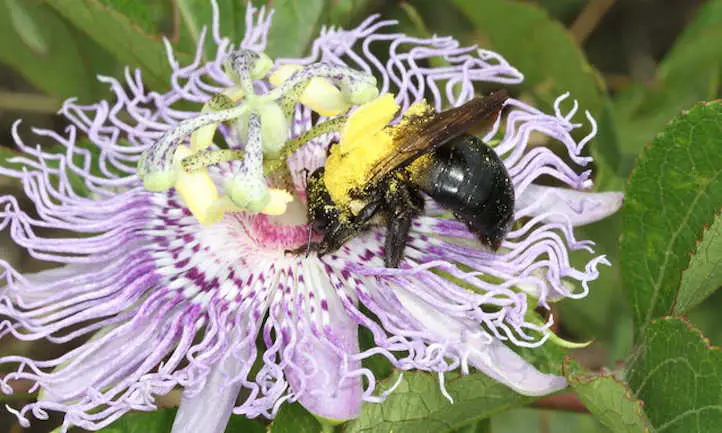
When choosing your vine, be sure to choose a cultivar of Passiflora edulis. This species is edible, unlike many others in the Passiflora genus. You have lots of choices though because there are over 50 varieties of Passiflora edulis. Here are some of our favorites:
Passiflora edulis, Purple Passionfruit
This is the basic species. It’s reddish-purple in color and one of the sweetest passionfruits. It grows well in cooler climates, so you’ll want this if you don’t live in the tropics.
Passiflora edulis f. Flavicarpa, Yellow Passionfruit, Golden Passionfruit, Tropical Passionfruit
You’ll find these varieties in the true tropics. It has yellow fruit that’s slightly more acidic, and therefore less sweet, than its purple counterpart. The benefits of this variety include larger fruit and pest and disease-resistance. The Flavicarpa variety encompasses most other yellow varieties, which have similar traits.
P. edulis f. Flavircarpa ‘Panama Red’ and ‘Panama Gold’
Both Panama species are tropical passionfruits that stem from the yellow variety. Despite this, the Panama Red is still red-purple. This variety is usually found in Australia.
P. edulis ‘Nellie Kelly’
This is a vine that’s highly recommended for cooler temperatures. It’s also highly pest and disease-resistant. This is achieved by grafting one variety – usually black passionfruit – with a blue passionfruit rootstock.
P. edulis ‘Black Knight’
If you’re limited to container growing, this is the perfect fruit for you. The Black Knight hybrid is a dwarf plant that’s perfectly happy being contained. It’s deep purple in color and tangy-sweet in taste. Because it’s a red passionfruit, Black Knight grows well in cooler climates.
Planting The Passion Fruit
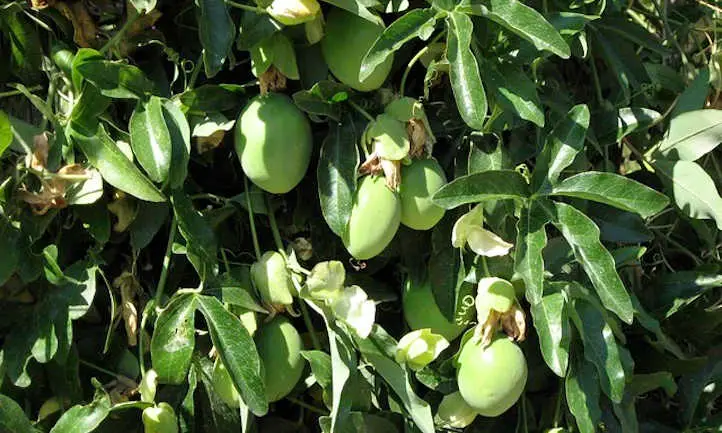
Passionfruit needs a little more preparation before planting than other plants. Once it’s in the ground though, you’ll agree that these are easy vines to care for.
When To Plant
Passionfruit starts should be planted in the spring for fast fruiting (in about six months). It can also be planted in the fall but will take longer to bear fruit.
If you’re growing from seed, start them about a month before you want to plant. This time frame depends on how old the seeds are. Fresh seeds germinate in a couple of weeks while older ones may take months.
Where To Plant
Passionfruit plants are ambitious growers, so you won’t be able to transplant once they’re established. Because of this, take extra care to choose the perfect spot for your vine to grow up (literally!). These plants need full sun to really thrive. However, they should be protected from extreme heat and strong wind. Keep in mind that the roots need plenty of space and have no problem climbing over neighboring plants.
You have to give these plants something to climb, whether it’s a trellis, arch, fence, or pergola. Some gardeners even let the plants climb trees (this will cause some damage to the tree). If you’re concerned about potential frost, plant the vines next to a wall or fence for protection.
In cold climates, passion fruit can grow indoors in containers. You’ll need a fairly large container to handle the extensive roots. You’ll also have to provide support for the vines to climb. If you can, put the container outside in full sun after the frost is gone and bring it back in before the cold comes.
How To Plant
Passion fruit is best if grown from seed, but only the right seed. If the variety is a hybrid, it’s unlikely to grow and/or bear fruit. Select your seeds from a reliable seed supplier so that they’re viable. You can take the seeds from a store-bought fruit, but only if it’s not a hybrid. Plant the seeds immediately, while they’re still fresh.
As we mentioned, fresh seeds germinate faster than old ones. If you took them from the fruit yourself, they’ll only take 10-20 days to germinate. Store-bought seeds are usually older and will take a couple of months to germinate.
Plant the seeds ½ to 1 inch deep in well-draining potting mix. When they’re 8-10 inches tall, you can transplant them into their permanent home. The seedlings need to be small for this to conserve water while the roots get established. If you waited too long to plant, prune back the stem a bit.
Before planting your seedlings or store-bought starts, prep the ground with organic fertilizer. These plants need lots of nutrients to sustain their rapid growth. Next, dig a hole that’s the depth of the root ball and twice as wide. If the roots are compacted, gently massage them out before planting.
Mulch is a must. Apply a thick layer all around the plants, but don’t put it right next to the stem. Now you can give your baby plants a good drink of water and let them get settled. You may need to tie the vines to the support until they get the idea. You’ll also have to replenish the mulch as often as needed.
After following these directions, you can expect to harvest in six months. Tropical passionfruits usually bear fruit faster than the purple variety.
Caring For Passion Fruit Vine

Like most tropical plants, Passifloras have specific care requirements. For your plants to really form their potential, follow these guidelines for success.
Sun and Temperature
As a light lover, this vine has to receive full sun to produce the best blooms and fruit. It will tolerate some shade though, especially in extreme heat. Zones 10-12 are best for keeping it outdoors year-round. If you’re growing indoors, place the container in the sunnies south-facing window you have. The temperature needs to be well above freezing – especially for yellow varieties.
Watering & Humidity
These vines grow fast and produce juicy fruit, so they need lots of water. Water them consistently so the soil doesn’t dry out. You may need to give extra water when the plants are fruiting and less during fall and winter. However, be careful not to overwater, as this can cause root issues. Don’t let water pool up on top of the ground or completely soak it.
You can set up an irrigation system to keep up with the watering demands. However, keep an eye on it to make sure it’s not under or overwatering.
Not surprisingly, these tropical plants rely on high humidity. If you live outside the tropics and zones 10-12, you may want to supplement with a humidifier. Not sure how humid your house is? Check out our top 10 hygrometers!
Soil
Since you’re going to be watering so much, well-draining soil is super important. Without it, the growing medium can quickly get compacted, soaked, and uninhabitable for subtropical plants. Doctor it with sand, perlite, or pumice as needed.
The soil also needs a pH of 5.5 – 6.5 for good fruit production and disease resistance. You can test it with an at-home soil testing kit or go to your local agriculture department or university for help.
Last, the growing medium needs to be fertile. Passiflora edulis requires a lot of nutrients that soil usually can’t provide on its own. That’s one of the reasons why mulch is so important for this species. You’ll also want to add fertilizer as needed.
Fertilizing
Fertilize your passionfruit 2-4 times a year starting in the spring. Commercial growers typically use fertilizers with an NPK of 10-5-20. Overall though, gardeners are encouraged to use fertilizers high in potassium.
If your soil is already high in nitrogen, choose a fertilizer with very little of it. Too much nitrogen will only promote leaf growth, which takes away from fruit and flower growth. The same thing can happen with overfertilization.
Pruning/Training
Passion fruit is a speedy grower, so you’ll have to keep up with it. Pruning is essential for keeping the size in check and preventing growing problems and pests. In cooler climates, prune at the beginning of the growing season. The new growth from where you pruned will produce ample blossoms. In the tropics, wait until after the fruit fades to prune.
When pruning, eliminate all the dead or dying stems. If you have particularly lush vines, thin out the middle so there’s still good air circulation throughout it. Cut back a third of the plant at most to keep the size in check.
You can train the vines to climb an overhead support like an arbor or T-post. Just tie the vines to the support and the tendrils will find it. We recommend using a fiber-based thread to secure them since wire can damage the stems. If they can’t be redirected, prune back any stems that are growing in the wrong direction.
Propagation
Seeds are the main method of propagation for Passionfruit. However, this isn’t always the best choice since hybrid seeds aren’t viable and purple passionfruit seedlings are more susceptible to Fusarium wilt. Because of these issues, many gardeners turn to stem cuttings.
The process for stem cutting propagation is very standard. Choose a healthy, mature branch and, with a clean knife, cut it off 3-4 leaf nodes down. Remove the bottom leaves so there are only 2-3 at the top. Dip the cut end in rooting hormone and stick it upright in a well-draining potting mix. Keep it moist but not soaking. In about 90 days, the roots should be established and new growth will be large enough to transplant (8-10”).
Pollination
Passionfruit pollen is extra sticky, which is great for insect pollination, but not wind. If you don’t have enough bees in your yard, you’re just not going to get fruit. Encourage bees to check out your passionfruit tree by luring them with other bee-attracting plants. You’ll find that your passionfruit vine pollinates better in warm and humid weather than dry or extreme temperature weather.
If needed, you can hand pollinate the blossoms. These are such large and bountiful plants though that it’s much easier to encourage the bee population. Unlike the purple variety, yellow passionfruit has to be cross-pollinated with a different cultivar. Choose another yellow variety and plant it nearby.
Harvesting and Storing
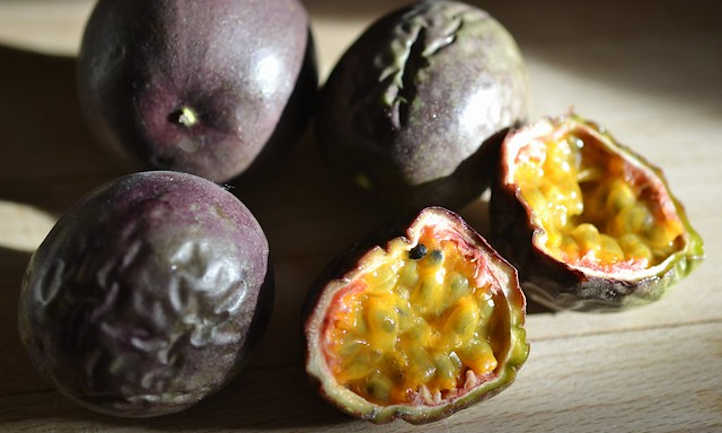
The blossoms are pretty, but the harvest is easily the most popular reason to grow these vines. All the hard work you’ve put into your garden will pay off as soon as these delicious fruits make their appearance.
Harvesting
When ripe, passionfruit will be fully colored, heavy, and come off the stem easily. As it ripens more, the skin will wrinkle slightly and the fruit will taste sweeter. It falls off the vine when ripe, which is much better than hauling out the ladder. When they fall, the fruit doesn’t bruise, rot, or attract pests easily, so you can collect them at your leisure (within reason). Optionally, you can pick it from the tree when it’s slightly unripe, but not if the fruit is still green.
And now we’re at the best part – eating! Cut open the fruit and you’ll have two bowls filled with lumpy, jelly-like deliciousness. Ignoring the inedible rind, scoop out the pulp with a spoon. The seeds are edible but can be easily removed.
Storing
Purple fruits are best eaten fresh since they’re so sweet. On the other hand, yellow fruits are usually made into preserves or juice. Both types will last for a few weeks whole and unrefrigerated and will last even longer in the fridge. If they were picked slightly unripe, just leave them on the counter for a few days and they’ll catch up. The skin will wrinkle as it ages, but the pulp inside will be tasty as ever.
You can freeze the whole passionfruit, just the pulp, or the juice. Make it into desserts, dressings, and even butter! You can also can passion fruit preserves using either a water bath or pressure canner.
Troubleshooting
Luckily, there aren’t many serious issues when it comes to passionfruit – especially if you planted the yellow varieties. Just in case though, here’s what to look out for.
Growing Problems
A common complaint from passionfruit growers is that the vines aren’t fruiting. If you have blossoms but no fruit, this is probably due to pollination issues. Have you seen any bees buzzing around? Do you have a second cultivar for cross-pollination if needed? These issues are solved by planting bee-attracting flowers, purchasing a second cultivar, and hand-pollinating for the time being.
Overfertilization is the other main culprit of fruit absence. Too much nitrogen will go straight to green growth, taking away from the fruit you should be eating. If your plants are rapidly climbing and spreading, but have little to no blooms, you need to cut back on the fertilizer.
Unripe fruit dropping off the tree is another issue. While it’s perfectly normal for ripened fruits to fall, green ones should be staying put. This is typically caused by inconsistent watering, pests, or disease. Make a good watering schedule and stick to it. You’ll also want to inspect the vines for symptoms of pests and disease.
If your vines have yellowing leaves, you may be looking at a magnesium or nitrogen deficiency. This is easily remedied by adding more fertilizer. If the yellowness shows up in freckles though, you could have a woodiness virus on your hands (explained below).
Pests
If you’re growing a purple passionfruit vine, you’ll have to be vigilant when it comes to pests. These varieties are much more susceptible to the following pests than yellow passionfruit – although yellow varieties can be affected as well.
Many species of caterpillars like to gnaw away at passionfruit foliage. Their feasts reduce the surface area of leaf, thereby cutting back photosynthesis. The fluid they secrete causes the leaves to dry out and the whole plant to lose its vigor. Caterpillars may also feed on stems, flowers, and fruit.
If you see a caterpillar on your plant, pluck it off and search the vine for eggs. Remove these by hand and dump them in soapy water to destroy them. Large infestations can be controlled with an organic insecticide (we recommend Bacillus thurigiensis, also known as BT). Interestingly, many species of passion flowers have evolved defense mechanisms against caterpillars, including poison, sticky hairs, and ant attractants (the ants will kill the caterpillars).
Root knot nematodes are an often overlooked garden pest. They’re tiny worms that will attack the roots of your purple passion fruits. They cause deformities in the roots including bumps, hairs, and root knots. Because of this, the roots are hindered in delivering water and nutrients to the rest of the plant, stunting growth.
To prevent nematodes from attacking your plants, take care of the growing medium. Till it 2-3 times every fall and remove any dead roots. Add plenty of organic matter and use crop rotation methods (marigolds work great!). If the nematodes are out of hand, you can apply organic nematicides like EcoClear. Unfortunately, nematicide will also kill beneficial nematodes, so the best method is prevention.
If you live in California, snails may be an issue in your garden. When it comes to passion fruit, snails destroy the leaves and bark. This can kill or seriously weaken young plants. Not to mention they leave behind mucus – yuck! Snails like to hide under debris, so keep your vine and the area around it clean. Since they’re nocturnal, search for them at night and treat them to a bucket of soapy water. Snails can be further prevented by using copper barriers or an organic snail and slug bait.
Diseases
Do the leaves on your vines look like they were sprinkled with yellow confetti? The passionfruit woodiness virus is most likely to blame. Along with spotty discoloration, this virus makes the leaves crinkle and the fruit grow in small and deformed. Woodiness virus is spread by aphids and occasionally garden tools.
Herbicides won’t eliminate this virus, so prevention is crucial. Only buy plants that are disease-free and use a sterile potting mix. Keep weeds away since they may spread the virus. Eliminating existing aphids populations won’t keep the virus away since it’ll already be spread. You can take precautions to prevent aphids from showing up in the first place though.
Perhaps the deadliest threat to passionfruit, fusarium will cause death within two weeks. The first symptom will be partial wilting followed by root rot, yellowing, darkness at the base of the plant, and eventually full wilt. The best way to combat this disease is to use resistant varieties. If the virus shows up anyways, use a biofungicide to try to treat it. MycoStop is a great choice.
Frequently Asked Questions
Q: Why is my passion fruit not fruiting?
A: If the vines are otherwise healthy, this is likely due to overfertilization or pollination problems. Lay off the fertilizer, plant some bee-friendly flowers, and hand pollinate the flowers for now.
Q: Do you need two passionfruit vines to get fruit?
A: If you’re growing a red/purple passionfruit, no. Yellow varieties do have to be cross-pollinated so require a second plant. Choose another yellow cultivar to place by the original.
Q: How do you tell if a passionfruit is ripe?
A: The fruit will be fully colored, heavy, and slightly soft to the touch. When the skin wrinkles, the fruit is at its eating prime. When ripe, the fruit will naturally fall off the vine.

